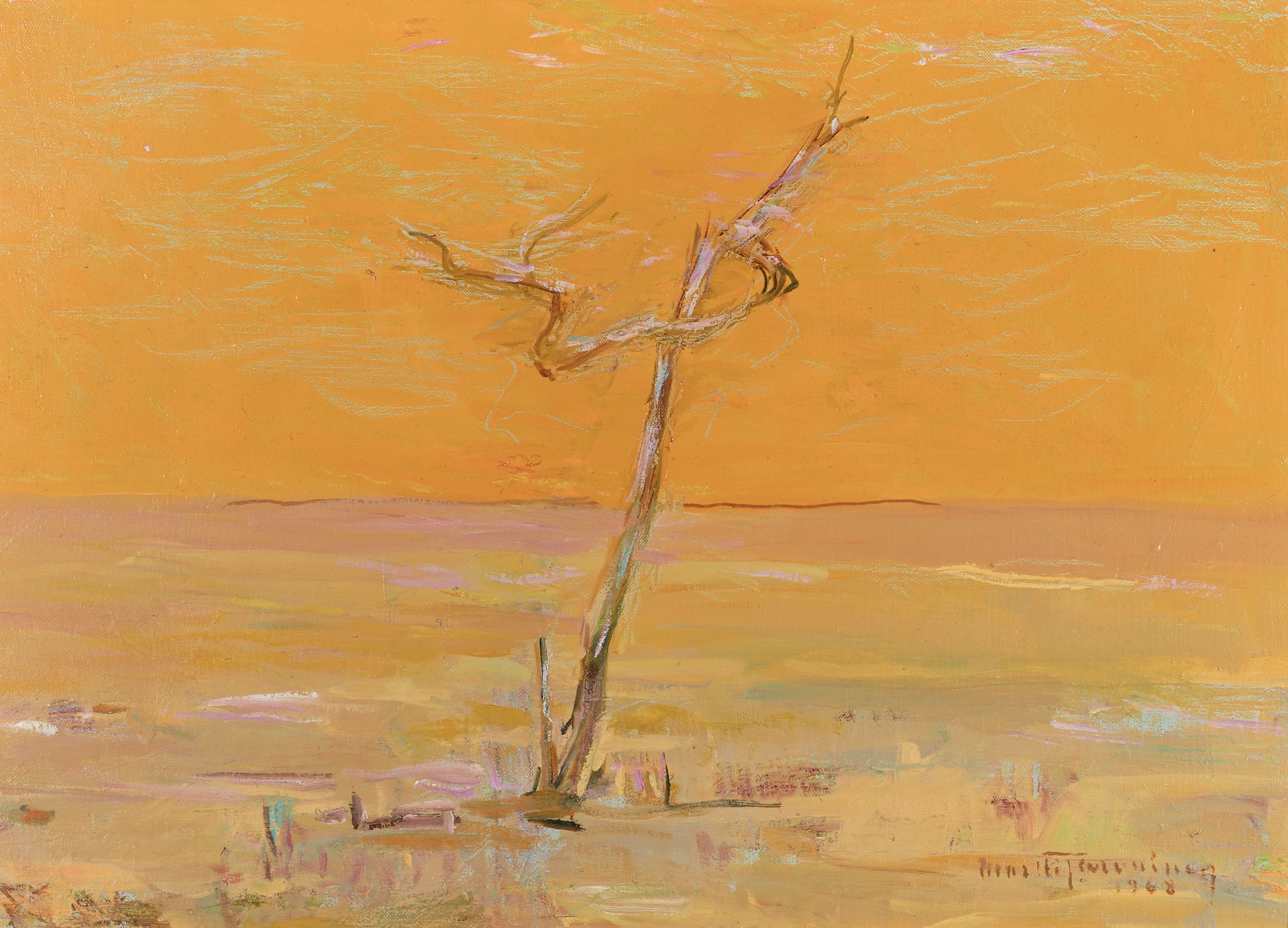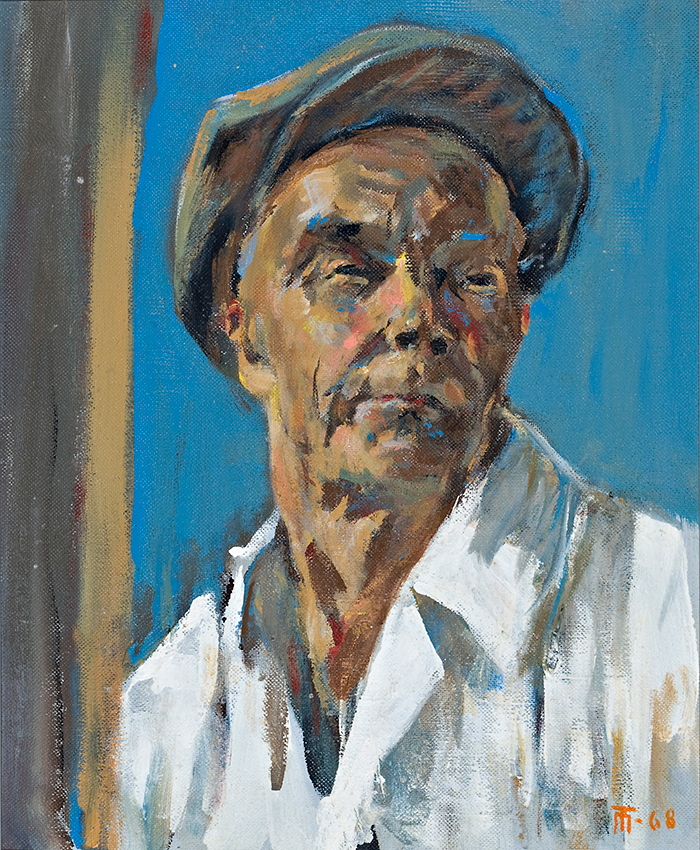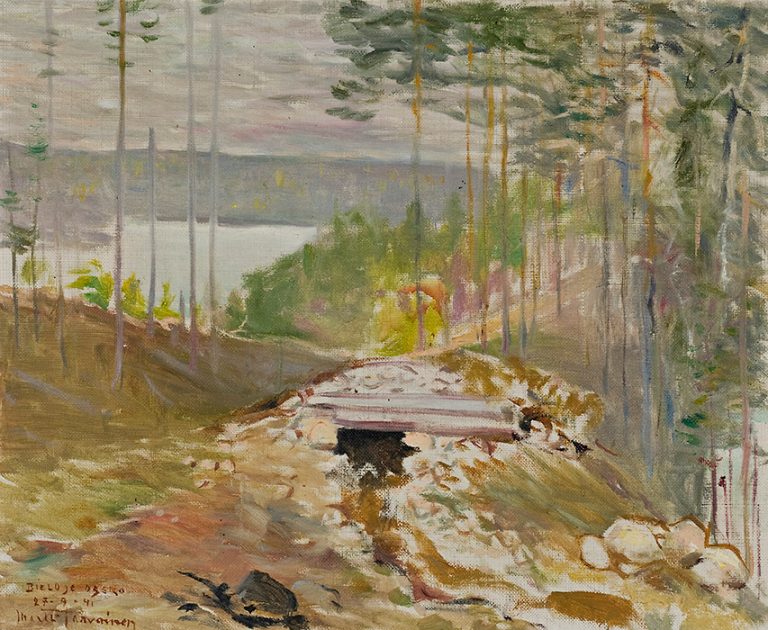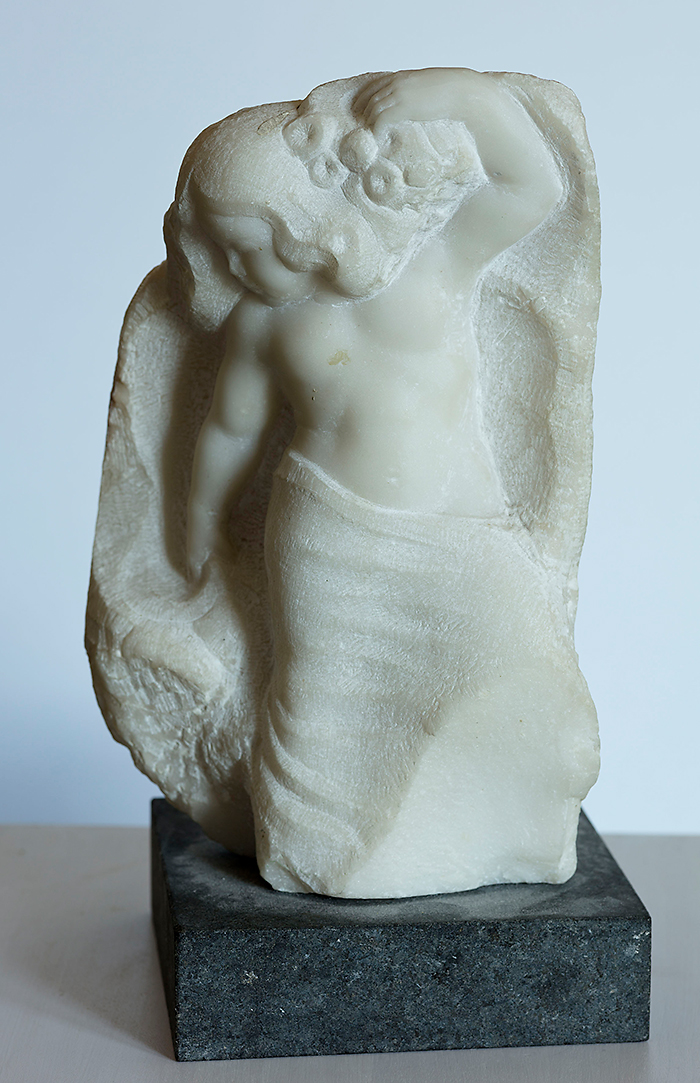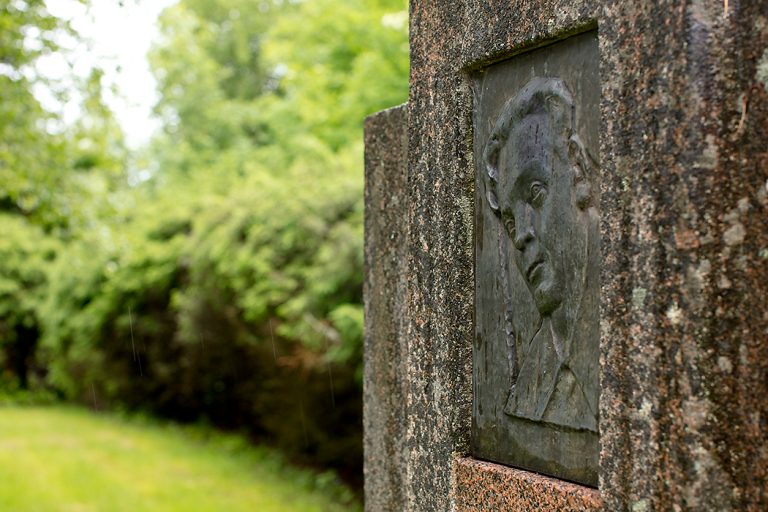Martti Tarvainen worked as a visual artist in Tuira, Oulu for five decades, and left a lasting mark on the public art of his hometown and the surrounding area with his sculptures and reliefs. He is also known as a skilled painter who was interested in both man-made environments and natural landscapes, and especially water motifs. The artist’s creative work continued active into advanced years. In an interview with newspaper Kaleva on his 85th birthday in 1982, the artist still spoke about his current works in progress: relief portraits made of clay, plasticine and plaster.
Born into a farming family in 1897 in Pieksämäki, Tarvainen moved to Paattinen near Turku with his childhood family. As a schoolboy, he became so enthused about painting that his potential career path, the school for church organists, changed to the Turku drawing school, from which Tarvainen graduated in 1917. In the autumn of the same year, he made his début in an exhibition in Turku. However, his artistic work did not follow a straightforward line. In the late 1910s, Tarvainen moved with his wife and daughter north to Muhos, where his father had acquired the Kopsa farm for Martti and his brother. According to the artist, painting and sculpting were at that time mainly hobbies as farm work still filled his everyday life in the 1920s. However, during his years in Muhos, Martti Tarvainen completed his first public work, an independence war monument to the Muhos churchyard, in 1923. His identity as an artist was made stronger by two years of sculpture studies at the Finnish Art Association’s drawing school in Helsinki, from which he also received a diploma in 1925. Around the same time, a close artist friend of his, Vilho “Ville” Lampi from Liminka, whom Tarvainen had met in Tampere in 1919–1920 during military service, studied at the school.
Moving to Oulu in the early 1930s made his engagement with art more regular. “Before the war, there were really no other sculptors here in Oulu except me”, Tarvainen later recalled. Until the mid-1970s, Tarvainen worked in the attic studio of his detached house in the district of Tuira, later in an apartment building on Koskitie after the old wooden houses of Tuira had been demolished. His most important public sculptures, Siblings/Waders (Merikoski Park), Wings (Karjasilta Park in Laanaoja stream) and the crucifix inside Tuira Church, date back to the 1960s.
According to Tarvainen’s relatives, he considered himself primarily a sculptor, but in an interview at the age of 85 he said he felt he was more a painter. At many points it was also a question of economic realities: painting was possible without thinking about finances, but for large sculptures and expensive materials a commissioner was required. Varying themes, portraits and intimate miniature sculptures ran parallel with public sculpture commissions. As a painter, Tarvainen was most at home with figurative expression, but also knew how to simplify, to convey emotion and to apply the power of but also a sensitivity to colour in his paintings from different decades.
To See and To Experience is the first posthumous solo exhibition of Martti Tarvainen’s work at the Oulu Museum of Art. The intimate summary exhibition comprises approximately thirty works including paintings, reliefs and miniature sculptures as well as a digital presentation of the works. The exhibition is displayed simultaneously with the retrospective exhibition My Song by sculptor Riitta-Alina Helevä (1951–). Martti Tarvainen was Riitta-Alina Helevä’s grand-uncle.
